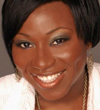 Throughout my day writers will email me for help with their writing. The words I have in my Twitter profile is one of the key reasons: I love to help writers. Let me know how I can help YOU! I include my email in my twitter profile to encourage such correspondence.
Throughout my day writers will email me for help with their writing. The words I have in my Twitter profile is one of the key reasons: I love to help writers. Let me know how I can help YOU! I include my email in my twitter profile to encourage such correspondence.
As an acquisitions editor at a New York publisher, I get a lot of email every day. Yet I make a point to answer each one of the emails from writers who are asking for help. From my 20+ years in publishing, I know it is hard to navigate the publishing world. I’ve sent my share of emails and letters into the system which have gone into a void—or so they seem because nothing came back from my careful shaping and sending them. It can be discouraging.
Recently a ministry leader wrote me about being stuck. He had started writing a book but gotten stuck at the second chapter. What actions should this leader take to move forward on his dream of writing a book?
Many times writers are stuck and unsure how to move forward. It happens with book projects because they are not simple 30 minute or an hour in length. To write a book takes a great deal of consistent effort and energy. When it comes to writing a book, one of the best tools is to first, write a book proposal. The key portion of the proposal that will keep you writing and moving ahead is the chapter-by-chapter outline. This simple outline is the structure for your book. You can even print it out then cross off the chapters as you write them.
If you are stuck in your writing, here’s five ways to get unstuck:
1. Evaluate Your Goal. Are you committed to this writing project? I’ve always found if I’ve made a commitment, then the writing will get handled. OK. I’ve committed to write a book or a magazine article or an online article or a press release. Think about the type of consistent effort will it take to accomplish your goal. For example, books are not produced overnight but will take a consistent effort.
2. Set a Goal You Can Accomplish. Be reasonable with yourself and set a writing goal that you can achieve. From my experience it is often a certain number of words such as 500 words a day or 5,000 words a day (which is a lot of intense writing to reach 5,000 words a day but it can be done).
3. Move Consistently toward Your Goal. To accomplish any goal you have to move forward. I like what one of my writers friends told me about creating a 400+ page novel, “No little elves come out at night and write my pages.” No one else can do the work for you. You have to find the time and simply do it. If it means getting up an hour or two earlier or staying up late at night or skipping some television, then you have to work at it to meet your goal.
4. Periodically Evaluate Your Goal. If you are having success, then take moments to celebrate. Each of us will celebrate differently. It is important to evaluate and celebrate if you are moving toward your goal. If you measure how you are doing with your goal and you are not making progress, then possibly it is time to readjust your goal and make it more reasonable or something that you can actually accomplish. Don’t beat yourself up that you have to readjust. Simply acknowledge it and keep moving forward.
5. Get an Accountability Partner. Yes maybe you could accomplish your goal on your own. From my experience, it is better if you have someone else asking you periodically about your goal and how you are moving toward it. This person can be someone that you speak with periodically on the phone or email or best physically see often.
I know I was only going to write five ways to get your writing unstuck. I’m throwing in a bonus sixth method. Maybe you are stuck in your writing because you have been trying to accomplish a long piece of writing such as a book or a novel or a workbook. If you have been chipping away at completing a longer work, here’s something to consider in this process:
6. Diversify Your Writing. While many people want to write a book, there are many ways to get published—outside of books. Often books take a long time to get into the market—especially if you go through a traditional publisher. Magazine articles are short and fun to write plus you can get them published a lot quicker than a book and it will reach many more people than the average book.
People like me who are in publishing want to see that you have been published. Your magazine publishing credits will help you attract the attention of a literary agent or book editor. My updated version of Jumpstart Your Publishing Dreams has a great deal of information about publishing to help you get unstuck.
Use these five methods to get unstuck and move forward with your writing. Take action today.
If you found this post helpful, please use the Share buttons to spread the word about it.
________________________________________
W. Terry Whalin, a writer and acquisitions editor lives in Colorado. A former magazine editor and former literary agent, Terry is an acquisitions editor at Morgan James Publishing. He has written more than 60 nonfiction books including Jumpstart Your Publishing Dreams. To help writers, he has created 12-lesson online course called Write A Book Proposal. His website is located at: www.terrywhalin.com.
Don’t have a copy of Become A Successful Author? What are you waiting for?Become A Successful Author is used in the “How To Write That Novel” course at Chicago State because it covers everything from branding to writing to editing to formatting and uploading electronic and print books to marketing and so much more. Your time is money. Look at all the time, thus money, you’ll save by ending your search for answers: Purchase Become A Successful Author for only $4.99 (eBook) or $8.99 (print) from: Amazon (US), Amazon (UK), Barnes & Noble






